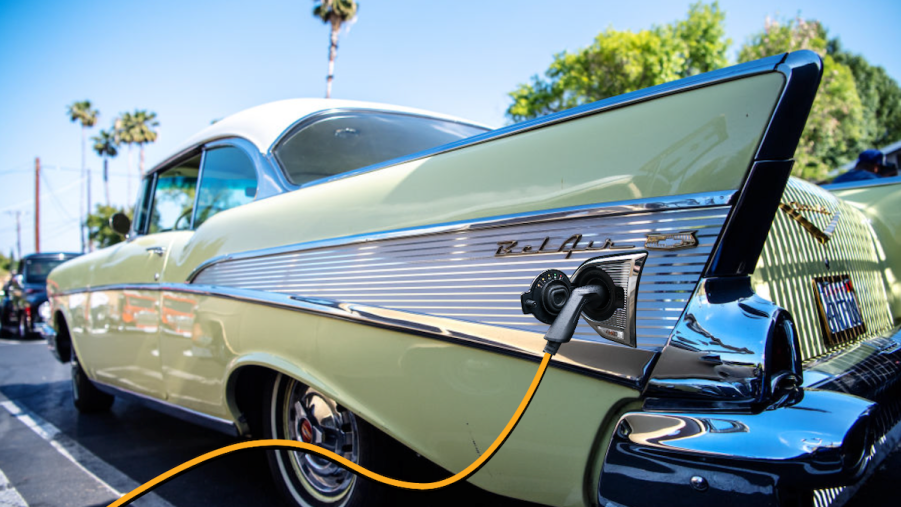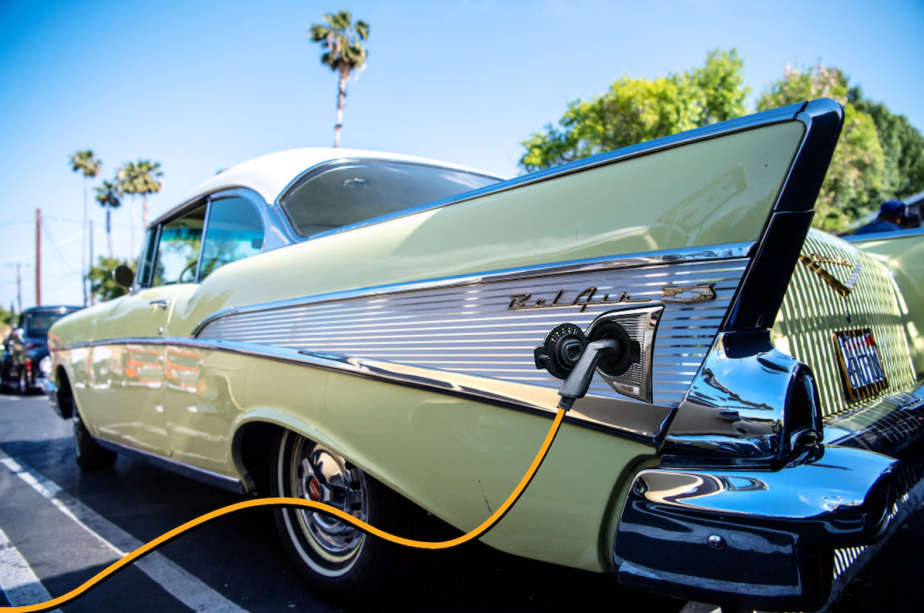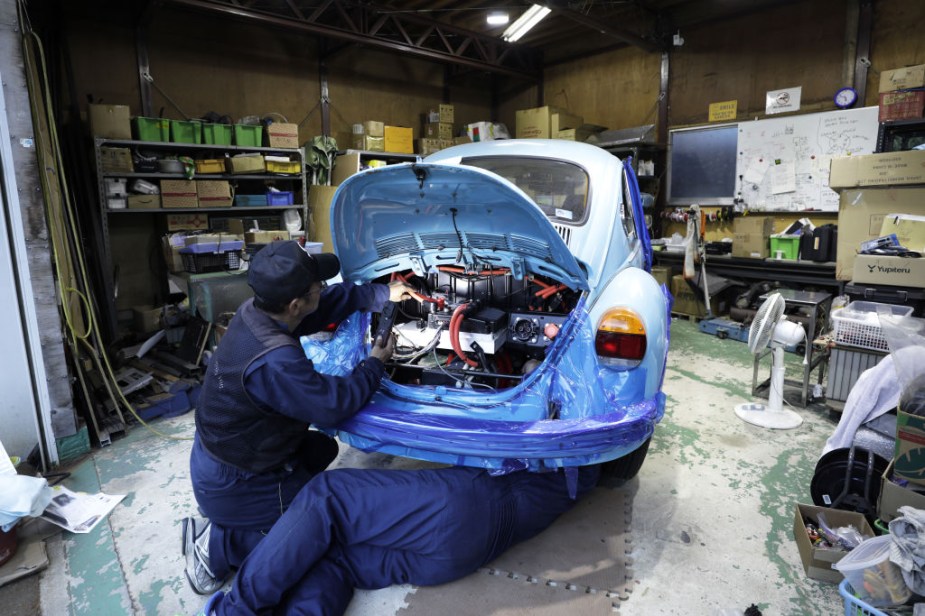
Toyota Says It Plans To Convert Old Cars Into EVs
Akio Toyoda has a plan. The head of Toyota wants not only his company but all companies to fight global emissions. So his plan is for Toyota to convert gas-powered cars into electric or hydrogen power. First, there will be hundreds of millions of ICE vehicles burning up fuel on roads for decades to come. And, it took a chunk of parts and labor to make them in the first place, so why let that go to waste?
Would EV conversions of old cars really make sense?

“If only new cars are electrified, we aren’t going to be able to achieve carbon neutrality,” Toyoda said last week. “We also have to consider vehicle units in operation.” So the only way to see a big reduction in carbon emissions is to turn these old tanks into clean emitters with electric or hydrogen conversions.
For most countries, the electric alternative makes the most sense. Infrastructure definitely favors it over hydrogen. And it hasn’t been shown that hydrogen is really a good alternative, given the amount of processing, storage complexities, and extreme lack of hydrogen stations necessary for drivers to access.
Are there other alternatives to cranking out new EVs?
To prove his point, Toyota unveiled two examples based on its wedgie AE86 hot hatches of the 1970s. One features an electric conversion, while the other opts for hydrogen. Toyoda says he knows developing his conversion concept is complicated.
“There’s a competition to announce BEVs as quickly as possible now because of regulation,” Toyoda said. But he thinks, and the industry seems to be showing, that car buyers want to make a choice of several alternatives. And he says that Toyota’s targets are different than other automakers.
Why is Toyota the first to suggest this mass conversion?

“They don’t have hybrids, they don’t have a global market, they’re not full lineup,” he said. “It’s a different competition, and it’s not the same players.” And right now, he only sees most shifting to develop new BEV models only. “But the reality is that we cannot achieve carbon neutrality by 2050 simply by shifting all new-car sales to EVs. It is important to provide options for cars that are already owned.”
Automotive News found similar comparisons from CEO Takeshi Uchiyamada last year. At the time, Toyota was criticized for not embracing the electric wave more quickly. “In reality, there are many more cars on the street than new cars sold every year,” Uchiyamada said. “We have to make all cars carbon neutral, including those already on the streets.”
Are EV conversions feasible?

For years GM has sold modern gas-powered conversions for enthusiasts wanting a new, more modern powertrain that includes fuel injection and the latest automatic transmissions. The packages include the necessary ECU and wiring. They have been the basis for thousands of back-yard conversions of 1957 Chevys, 1932 Fords, and on and on.
So there is already half of a successful, established blueprint for doing conversions, albeit centered around performance and modernity. But the other half, providing the facilities and workforce to complete the conversions, needs work. But it seems viable and makes sense.
“I wanted to make a proposal that there are options for car lovers too,” Toyoda said. “Why is it that people don’t approve of multiple pathways and only accept one?”



